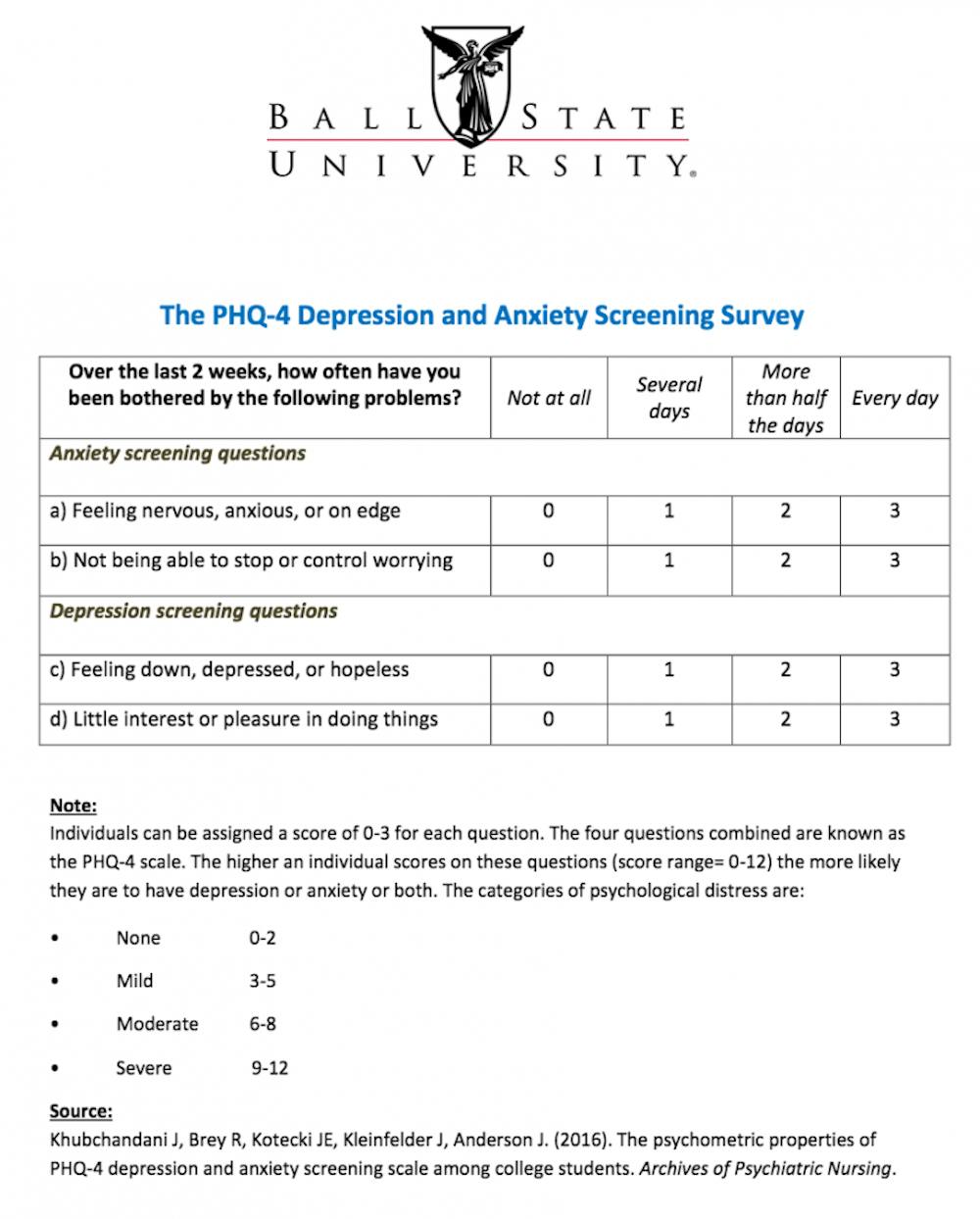How reliable is this?
- The four questions (two on depression and two on anxiety) can help diagnose depression (79 percent sensitivity and accuracy) and anxiety (85 percent sensitivity and accuracy).
- Reliability analyses indicated the two depression questions are 77 percent reliable and the two anxiety questions are 82 percent reliable over time.
- Overall, the four questions have a reliability of 81 percent in diagnosing anxiety and depression.
Due to this, professors Jagdish Khubchandani, JoAnn Kleinfelder and Jerome Kotecki created a four-question screener to help students detect and diagnos anxiety and depression.
“There are thousands of college students and young adults across the nation silently suffering from depression and anxiety,” Khubchandani, an assistant professor of community health education, said in a press release.
A big reason why so many are undiagnosed is because of the lack of reliable, efficient and time-saving ways to screen for them, Khubchandani said.
Nearly one in six college students (14.3 percent) have been diagnosed or treated for anxiety and 12 percent had been diagnosed or treated for depression, according to the 2014 National College Health Assessment survey.
Khubchandani's study was the first of its kind to be published in the Archives of Psychiatric Nursing. The screener surveyed 934 college students and their psychosocial characteristics, according to the press release.
The results found almost 10 percent of students reported having depression diagnosed by a health care professional within the past year, and 20 percent reported having diagnosed anxiety.
“Students carry a wide range of activities that often cause stress that may lead to depression and anxiety," Kleinfelder, a physiology and health professor, said. "The pressure to do well in all areas with limited time and lack of sleep heighten the stress. So we are seeing a rise in both depression and anxiety."
One in three students report prolonged periods of depression, and one in four report having suicidal thoughts or feelings, according to the National Alliance on Mental Illness.
Kleinfelder said the numbers are not surprising. Depression and anxiety often occur together, which is why diagnosis and the proper treatment is so important, she said.
“Undiagnosed cases can range from mild to severe and cause disruption of a person’s life and day-to-day activities that include social and physical well-being,” Kleinfelder said. “The earlier risk factors are discovered or clinical diagnoses are made, the better the prognosis. But, it is important to know that even depression and anxiety that falls outside of a clinical diagnosis can still have negative effects on daily life. That is why screening is so important.”
Khubchandani said the top two reasons students visit the Counseling Center on campus are due to depression and anxiety. A 2015 Penn State study found the same — anxiety and depression ranked above academic performance, relationship problems and stress when it came to students' primary concerns.
He said the City of Muncie lacks psychiatrists who are able to actually diagnose and prescribe the right medication to students, which is why the university holds a huge responsibility to take care of students.
Because of this, Khubchandani and his research team are trying to implement the screener at Ball State and beyond.
“We are sending our questionnaire to universities nation-wide in hopes to bring awareness and help to high-risk students,” Khubchandani said. “Within Ball State, we have to design a plan and reach out to students and multiple offices on campus, like admissions, to get this going. This is going to need to be a campus-wide collaboration in hopes that we can reach as many people as possible to show that we care, and that diagnosis and treatment are important."
How reliable is this? • The four questions (two on depression and two on anxiety) can help diagnose depression (79 percent sensitivity and accuracy) and anxiety (85 percent sensitivity and accuracy). • Reliability analyses indicated the two depression questions are 77 percent reliable and the two anxiety questions are 82 percent reliable over time. • Overall, the four questions have a reliability of 81 percent in diagnosing anxiety and depression.





